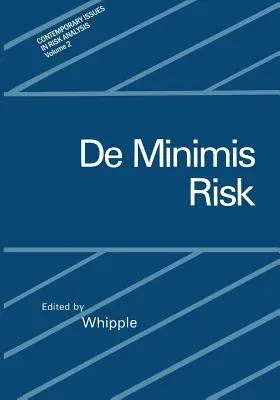On May 29 and 30, 1985, a workshop was held to explore the legal,
ethical, social, scientific, and practical aspects of the use of the de
minimis risk concept for health and safety regulation. The workshop was
sponsored by the Society for Risk Analysis and its National Capital Area
Chapter, the Environmental Protection Agency, the Nuclear Reg- ulatory
Commission, and the Electric Power Research Institute. The two-day
meeting was held in Washington, D. C., at the Brookings Institution;
however, the Brookings Institution was not a sponsor of the meeting and
did not playa role in its program. De minimis risk policy considerations
were addressed from a theoretical and phil- osophical viewpoint, from a
quantitative and methodological basis, and through insights gained with
regulatory applications. The distinctions between these three approaches
to the subject are not sharp; most papers in these proceedings address
aspects of all three topics. The reader familiar with the literature on
the use of risk assessment in regulatory policy and decision making will
find significant new contributions to the field. One of these is the
examination of regulatory actions-in particular actions by the EPA-in
response to risks of varying magnitude. Many attempts to seek patterns
in regulatory policies have been based on analysis of the implicit
economic value in obtaining risk reductions. These analyses have
typically found great variability in the marginal cost- 1 effectiveness
of regulatory actions.


